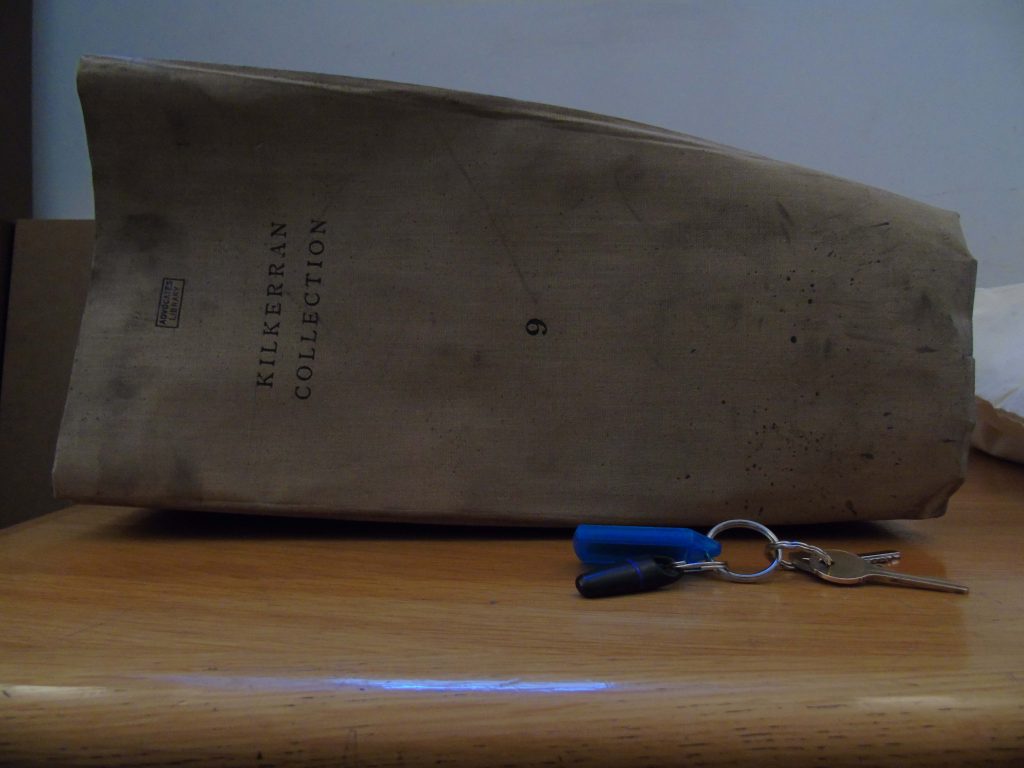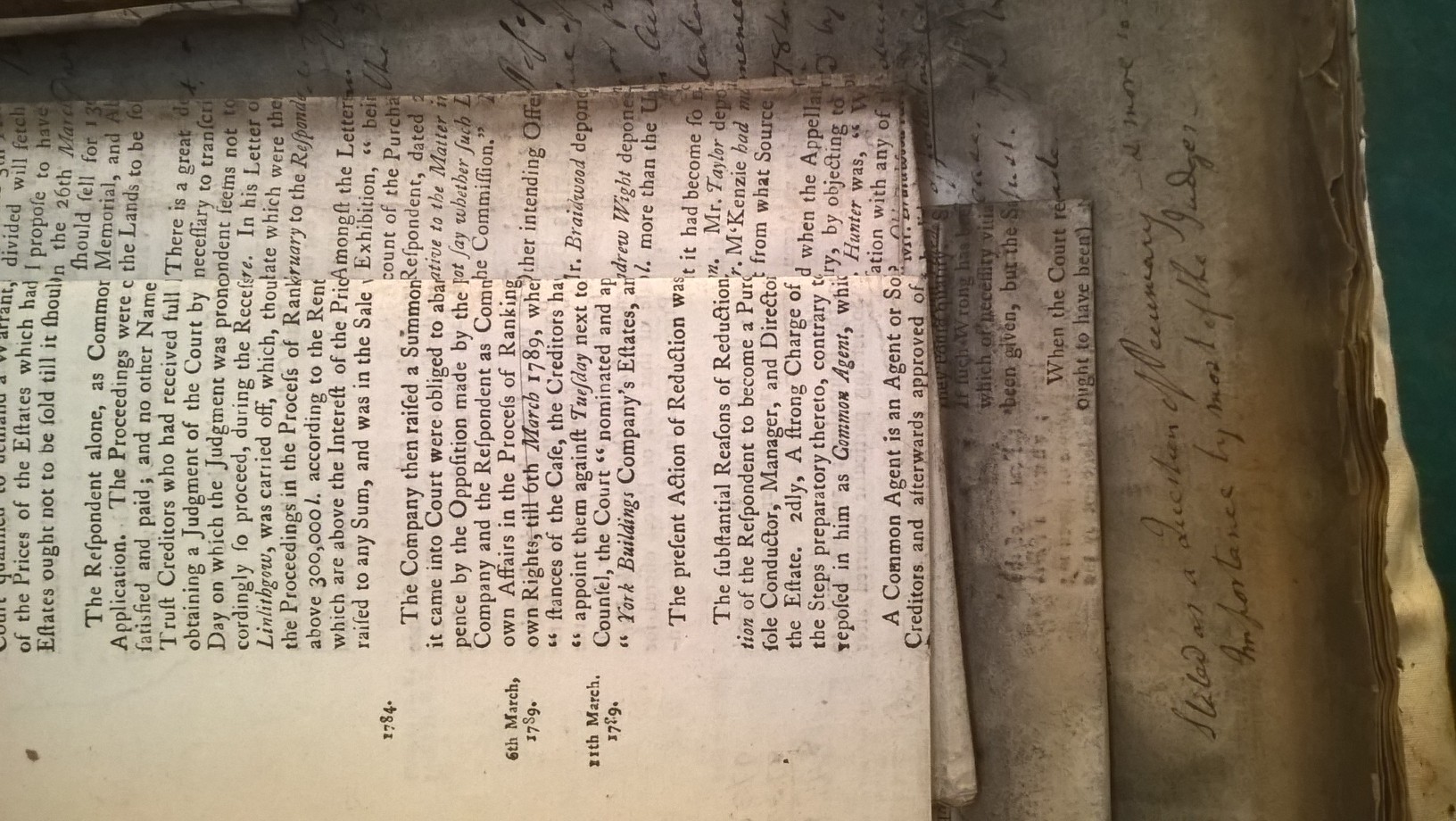In this week’s blog, Special Collections Conservator, Emily, describes the conservation problems encountered during a condition survey of a collection of bound volumes…
I have recently carried out a condition survey of three collections of Scottish session papers across three sites in Edinburgh; the Centre for Research Collections, Signet Library and Advocates Library. Session papers are documents used in the presentation of cases in the Court of Session, Scotland’s supreme civil court. They are the written pleadings of contested cases, plus non-legal documentary exhibits such as drawings, plans and maps. The papers give a valuable insight into the social, economic, political and legal history of Scotland. I am carrying out this survey as a part of a pilot project to evaluate digitisation options, and estimate the time needed to conserve and digitise the collections and the associated costs. This project is being carried out in conjunction with John Bryden, Project Photographer in the Digital Imaging Unit team.

Session papers at the Centre for Research Collections
With approximately 6000 items in these collections, I knew I wouldn’t be able to assess each item individually in the time period given, so I decided to take a representative sample from each of the collections. The Preservation Advisory Centre’s Preservation Assessment Survey recommends that 400 items should be assessed to give a statistically reliable sample. This means that the findings of this survey can be generalised to the whole collection. I made a tick box survey form using Microsoft Access Database to maximise the efficiency of the survey, and gave myself a maximum of 5 minutes to assess each book.

Example of database survey
There are multiple problems with the condition of the collections that will need to be addressed prior to digitisation. For example, many of the volumes in the collections have been bound in large formats which are difficult to handle.

Very large bound volume
Often pages have been folded to fit into the size of the book, and then they have been tightly bound together, this makes opening and closing the foldouts difficult and has resulted in tearing in some cases. Some volumes contain pages that are different sizes. This allows the ingress of surface dirt and as a result some pages are extremely dirty. Often this obscures the text, and there is a risk it could transfer to other items during digitisation.

Pages that have been folded with excessive surface dirt
In other volumes the spines have split completely and the volume is in several sections. This has been caused by the method of binding called a tightback. In this binding method, the spine cover is glued directly over the sewing. When the binding is opened, the cover is forced to open with the spine which causes it to crack.

Tightbacks with split spines
This combined with the deterioration of leather renders the volume almost unusable.

Tightbacks with split spines and degraded leather
Small margins are another common problem. This means that the text goes into the spine and the full page cannot be captured during digitisation, potentially losing important information.

Bound volume with narrow margins and tightly bound
If the project goes ahead, it will be time-consuming and complex, but the result of having these papers freely available to the public will be invaluable.
